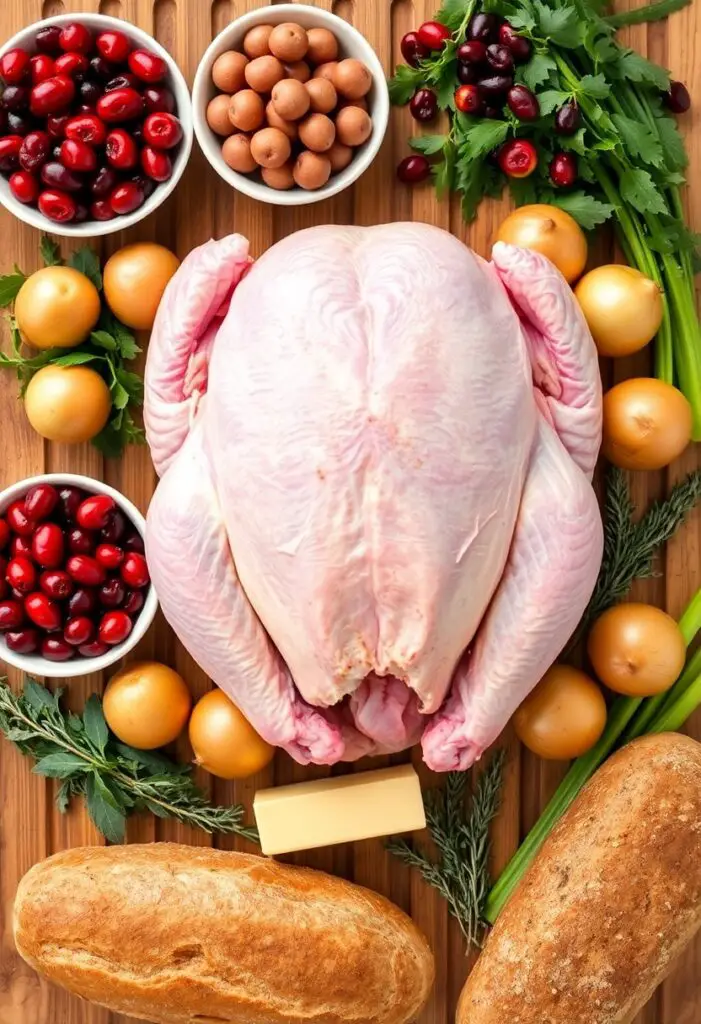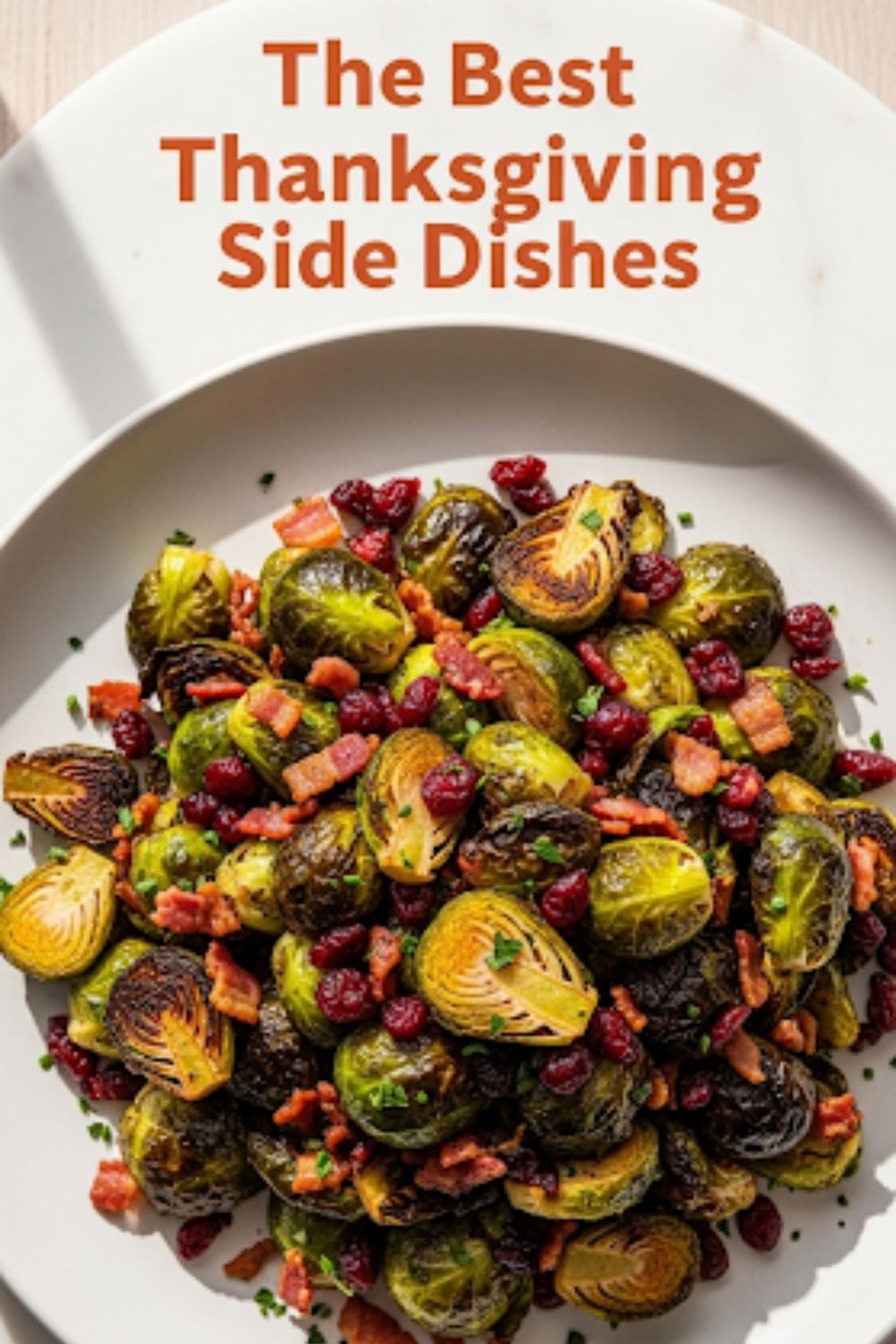Ditch the Stress: Your Ultimate Guide to a Traditional Thanksgiving Menu (Without the Meltdowns!)
Ever stared at a whole turkey, felt your soul leave your body, and wondered if ordering pizza was an acceptable Thanksgiving tradition? Been there, done that, bought the stretchy pants. But what if I told you nailing a Traditional Thanksgiving menu doesn’t have to feel like an Olympic sport? What if you could actually enjoy the cooking, impress your family, and still have time to nap before the tryptophan coma truly hits? Stick with me, buttercup, because we’re about to make Thanksgiving epic and, dare I say, almost… easy.
Why This Traditional Thanksgiving Menu Will Make You a Holiday Legend
Let’s be real: Thanksgiving is basically an excuse to eat your weight in deliciousness and then blame it on gratitude. This particular traditional Thanksgiving menu isn’t just a collection of recipes; it’s your secret weapon. We’re talking about flavor bombs that will make your guests weep tears of joy, and a process so streamlined, you’ll actually believe you’re Martha Stewart (minus the prison sentence, hopefully). You want oohs and aahs? You want people asking for your “secret recipe” for years to come? This is it. Trust me, your taste buds (and your ego) will thank you.
Ingredients: Your Thanksgiving Arsenal

No need for a grocery store scavenger hunt, folks. These are your classic, unpretentious Thanksgiving heroes. Fresh, good-quality ingredients make all the difference, so don’t skimp if you can help it.
For the Roast Turkey
- 1 (12-14 lb) whole turkey, thawed
- 1 stick (1/2 cup) unsalted butter, softened
- 2 tablespoons fresh sage, chopped
- 1 tablespoon fresh rosemary, chopped
- 1 tablespoon fresh thyme, chopped
- 1 large yellow onion, quartered
- 2 carrots, roughly chopped
- 2 celery stalks, roughly chopped
- Salt and black pepper to taste
- 2 cups chicken or vegetable broth
For the Classic Stuffing
- 1 loaf (16 oz) day-old white bread, cubed
- 1/2 cup unsalted butter
- 2 cups chopped yellow onion
- 2 cups chopped celery
- 1 apple, peeled, cored, and diced (Granny Smith works great!)
- 1/2 cup fresh parsley, chopped
- 1 tablespoon fresh sage, chopped
- 1 teaspoon dried thyme
- 2 cups chicken or vegetable broth
- 2 large eggs, lightly beaten
- Salt and black pepper to taste
For the Creamy Mashed Potatoes
- 5 lbs Russet or Yukon Gold potatoes, peeled and quartered
- 1 stick (1/2 cup) unsalted butter
- 1 cup warm milk (whole milk, please!)
- 1/2 cup sour cream or cream cheese, softened
- Salt and black pepper to taste
- Optional: Chives for garnish
For the Tangy Cranberry Sauce
- 1 (12 oz) bag fresh cranberries
- 1 cup granulated sugar
- 1 cup orange juice (freshly squeezed if you’re feeling fancy)
- 1/2 cup water
- Pinch of cinnamon or orange zest (optional, but highly recommended!)
Key Substitutions:
- Herbs: Dried herbs work in a pinch, but use half the amount of fresh.
- Broth: Vegetable broth is a perfect swap for chicken broth for vegetarian guests.
- Dairy: For mashed potatoes, use a non-dairy milk and vegan butter for a dairy-free option.
Tools & Kitchen Gadgets Used
Okay, let’s talk gear. You don’t need a professional kitchen, but a few key items make life a whole lot easier. Consider these your trusty sidekicks for Thanksgiving dominance.
- Large Roasting Pan with Rack: Essential for an evenly cooked turkey and glorious drippings.
- Meat Thermometer (Instant-Read is best!): Seriously, this is your MVP. Don’t eyeball turkey doneness, folks.
- Large Mixing Bowls: You’ll need a few for all those glorious ingredients.
- Sharp Chef’s Knife: For all that chopping. A dull knife is a dangerous knife, IMO.
- Cutting Board: A big one!
- Large Pot (for potatoes): The bigger, the better.
- Potato Masher or Ricer: A ricer makes super smooth potatoes, just sayin’.
- Saucepan (for cranberry sauce): Medium-sized will do.
- Whisk: For lumps (or lack thereof) in your mashed potatoes.
- Baking Dish (9×13 inch) for stuffing: A casserole dish works perfectly.
- Measuring Cups and Spoons: Obviously.
- Basting Bulb (optional but helpful): For that juicy turkey.
- Aluminum Foil: For resting the turkey and covering dishes.
Step-by-Step Instructions: Your Culinary Master Plan
Alright, it’s showtime! Follow these steps, and you’ll be carving like a pro in no time.
H3: Roast Turkey: The Main Event
- Prep the Bird: Remove the giblets and neck from the turkey cavity. Pat the turkey completely dry with paper towels. This is crucial for crispy skin, folks!
- Herb Butter Magic: In a small bowl, mix the softened butter with chopped sage, rosemary, and thyme. Season generously with salt and pepper.
- Rub It Down: Gently loosen the skin over the breast of the turkey with your fingers. Spread about two-thirds of the herb butter directly onto the breast meat under the skin. Rub the remaining butter all over the outside of the turkey. Don’t be shy!
- Stuff the Cavity: Place the quartered onion, carrots, and celery into the turkey cavity. This adds flavor to the drippings.
- Roast Away: Place the turkey on the rack in your roasting pan. Pour 2 cups of broth into the bottom of the pan.
- Oven Time: Preheat your oven to 425°F (220°C). Roast the turkey for 30 minutes.
- Lower the Heat: Reduce the oven temperature to 325°F (160°C). Continue roasting for 2-3 hours, or until a meat thermometer inserted into the thickest part of the thigh (without touching bone) reads 165°F (74°C). Baste every 30-45 minutes with the pan juices. If the skin gets too dark, loosely tent it with foil.
- Rest, My Friend, Rest: This is the most important step! Once cooked, transfer the turkey to a cutting board, tent loosely with foil, and let it rest for at least 20-30 minutes before carving. This allows the juices to redistribute, ensuring a tender, juicy bird.
H3: Classic Stuffing: The Ultimate Comfort Food
- Dry Those Cubes: If your bread isn’t day-old, you can spread the cubes on a baking sheet and bake at 275°F (135°C) for 15-20 minutes until lightly toasted.
- Sauté the Veggies: Melt 1/2 cup butter in a large skillet over medium heat. Add the chopped onion and celery; cook until softened, about 8-10 minutes. Stir in the diced apple, parsley, fresh sage, and dried thyme. Cook for another 2-3 minutes.
- Combine Everything: In a large mixing bowl, combine the bread cubes with the sautéed vegetable mixture.
- Wet It Up: In a separate bowl, whisk together the 2 cups broth and 2 beaten eggs. Pour this over the bread mixture and toss gently to combine. Season with salt and pepper. Don’t overmix; you want some texture.
- Bake It: Transfer the stuffing to a greased 9×13 inch baking dish. Bake at 375°F (190°C) for 30-40 minutes, or until golden brown and heated through. For a crispier top, uncover for the last 10-15 minutes.
H3: Creamy Mashed Potatoes: A Cloud on Your Plate
- Boil ‘Em: Place the peeled and quartered potatoes in a large pot. Cover with cold water by about an inch. Add a generous pinch of salt. Bring to a boil, then reduce heat and simmer until the potatoes are fork-tender, about 15-20 minutes.
- Drain and Mash: Thoroughly drain the potatoes in a colander. Return the drained potatoes to the empty hot pot. This helps dry them out slightly. Mash them with a potato masher or push them through a ricer for ultimate smoothness.
- Mix in the Good Stuff: Add the butter, warm milk, and sour cream to the mashed potatoes. Stir vigorously until everything is combined and the potatoes are creamy. Be careful not to overmix, or they’ll get gummy.
- Season to Perfection: Season generously with salt and pepper. Taste and adjust! You might be surprised how much salt mashed potatoes can take. Garnish with chives if you’re feeling fancy.
H3: Tangy Cranberry Sauce: A Burst of Freshness
- Simmer Time: Combine the fresh cranberries, granulated sugar, orange juice, and water in a medium saucepan.
- Cook Until Popping: Bring the mixture to a boil over medium-high heat, stirring occasionally. Reduce the heat to medium-low and simmer for 10-15 minutes, or until the cranberries have burst and the sauce has thickened. You’ll hear little “pops” – that’s the good stuff!
- Cool It Down: Remove from heat. Stir in the optional cinnamon or orange zest. The sauce will thicken further as it cools. Serve warm or chilled.
Calories & Nutritional Info (Estimated Per Serving)
Disclaimer: Thanksgiving is not the day for calorie counting, but hey, information is power, right? This is a rough estimate for one generous serving of the full meal (turkey, stuffing, potatoes, cranberry sauce).
- Calories: ~800-1000 calories (varies wildly based on portion size and fat content)
- Protein: ~45-55g (thanks, turkey!)
- Carbohydrates: ~70-90g (hello, stuffing and potatoes!)
- Fat: ~40-60g (butter, butter everywhere!)
- Sodium: Can be high, depending on broth and seasoning. Watch your intake if needed.
- Fiber: A decent amount from potatoes, cranberries, and veggies.
- Vitamins & Minerals: Good source of Vitamin C (cranberries), Potassium (potatoes), and various B vitamins (turkey).
Common Mistakes to Avoid (So You Don’t Cry into Your Gravy)
Thanksgiving is ripe for culinary mishaps, but you, my friend, are now equipped!
- Not Thawing the Turkey Properly: Seriously, do it. A frozen turkey takes FOREVER and cooks unevenly. Thaw in the fridge, not on the counter! Allow 24 hours for every 4-5 pounds.
- Overcooking the Turkey: Dry turkey is the saddest turkey. Use a meat thermometer. 165°F in the thigh, then REST it. No excuses.
- Under-Seasoning: Bland food is a crime. Salt and pepper generously at every stage. Potatoes, turkey, stuffing – they all need love.
- Overmixing Mashed Potatoes: This is how you get gummy, gluey potatoes. Mash until just combined, then stop.
- Not Resting the Turkey: The biggest mistake! Cutting into a hot turkey immediately lets all those precious juices run out, leaving you with dry meat. Resting is non-negotiable.
- Forgetting the Cranberry Sauce: Don’t underestimate the power of that tangy pop of flavor to cut through all the richness. Make it! It’s easy!
- Trying New Recipes on Thanksgiving Day: TBH, this is a rookie move. Stick to tried-and-true or practice new ones before the big day.
Variations & Customizations: Spice Things Up!
Feeling adventurous? Here are a few ways to tweak your Traditional Thanksgiving menu.
- Keto-Friendly Swap: For stuffing, use low-carb bread or even riced cauliflower as the base. Skip the sugar in cranberry sauce and use a sugar substitute. For mashed potatoes, try mashed cauliflower instead of potatoes, or a mix of both.
- Spicy Kick: Add a pinch of cayenne pepper or a dash of hot sauce to your mashed potatoes for a subtle warmth. For cranberry sauce, throw in a few slices of fresh ginger or a tiny bit of red pepper flakes during simmering.
- Vegetarian/Vegan Delight: Replace turkey with a stuffed butternut squash or a savory lentil loaf. Ensure your stuffing uses vegetable broth and vegan butter. For potatoes, use non-dairy milk and vegan butter. The cranberry sauce is already vegan!
- Herb Twist: Experiment with different herbs! Try rosemary and garlic in the turkey butter, or add dill and chives to your mashed potatoes.
FAQ Section: Because You Have Questions, We Have Answers
Q1: How long does it take to thaw a frozen turkey?
A: As a general rule, plan for 24 hours of thawing time in the refrigerator for every 4-5 pounds of turkey. So, a 12-pound bird needs about 3 days. Plan ahead!
Q2: Can I make the cranberry sauce ahead of time?
A: Absolutely! Cranberry sauce is actually better made a day or two in advance. It allows the flavors to meld beautifully. Store it in an airtight container in the fridge.
Q3: What’s the best way to get crispy turkey skin?
A: Patting the turkey completely dry before roasting is key! Also, starting the oven at a higher temperature (425°F) for the first 30 minutes helps crisp up the skin, then lowering it for even cooking. Don’t tent with foil until absolutely necessary.
Q4: My mashed potatoes are gummy. What went wrong?
A: You probably overmixed them! Starch develops when potatoes are overworked. Mash until just combined with your liquids and fat, then stop. Also, using a ricer instead of a masher can help prevent gumminess.
Q5: Can I stuff the turkey cavity with stuffing?
A: While traditional, it’s generally not recommended for food safety reasons. The stuffing needs to reach 165°F to be safe, which can overcook the turkey meat surrounding it. It’s better to bake your stuffing in a separate dish.
Q6: How do I make gravy from the turkey drippings?
A: After removing the turkey, pour the pan drippings into a fat separator. Skim off the fat. In the roasting pan, deglaze with a bit of broth or wine, scraping up any browned bits. Whisk in a roux (butter and flour), then gradually add the defatted drippings and more broth until thickened to your desired consistency. Season to taste!
Q7: What are good side dishes to go with this Traditional Thanksgiving menu?
A: Beyond what we’ve covered, green bean casserole (a classic!), sweet potato casserole with marshmallows, roasted Brussels sprouts, and dinner rolls are all fantastic additions that complement this menu perfectly.
Final Thoughts: Go Forth and Feast!
See? That wasn’t so bad, was it? You’ve got the roadmap, the ingredients, and the sass to pull off a truly magnificent Traditional Thanksgiving menu. Say goodbye to store-bought, pre-made anything! You’re a culinary rockstar now. So go forth, conquer that kitchen, and prepare for the ultimate food coma. And hey, don’t forget to tag me in your feast pics! I live vicariously through your holiday triumphs. Now, who’s ready for seconds (and thirds, and fourths…)?


